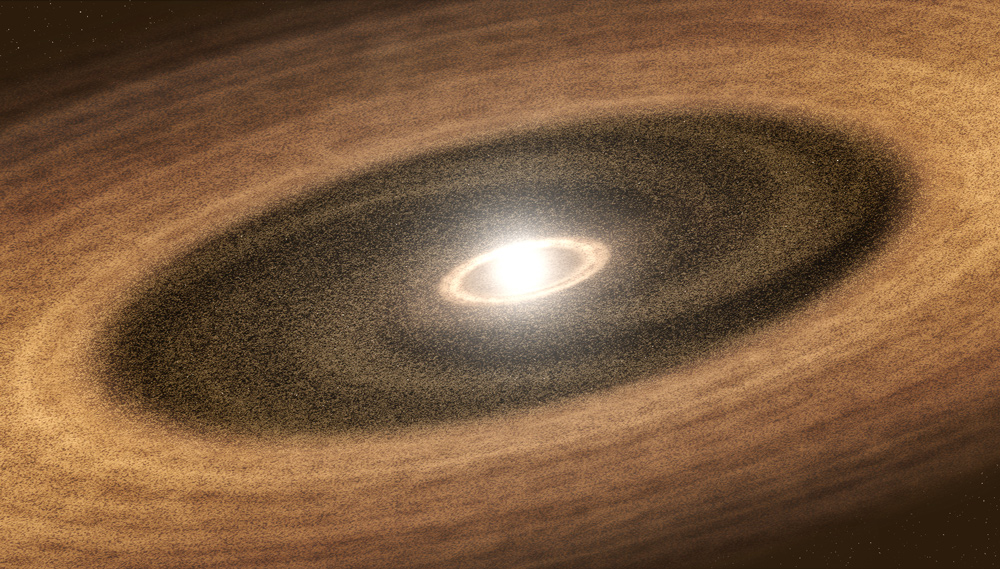Multimedia
Grazing in the gap

While astronomers now know that exoplanets are exceedingly common in the galaxy, the mechanics by which they are formed aren’t well understood. Planetary childhood remains a mystery.
Young stars start out with a massive disk of gas and dust that over time, astronomers think, either diffuses away or coalesces into planets and asteroids. “The speculation is that as planets form they clear out a region of gas and dust around them, forming a telltale ‘gap’ in the disk”, said Stefan Kraus, an astronomer with the Harvard-Smithsonian Center for Astrophysics and the University of Exeter.
Disks with fully cleared gaps have been observed before, but Kraus and his team may have found a system in an important in-between stage, where the recently formed planets still interact with the disk material.
The team’s target star, V1247 Orionis, was identified by a lack of emissions that indicated the presence of a gap in the dust disk. “This system has an inner dust disk, a big gap, and then an outer disk,” Kraus said.





